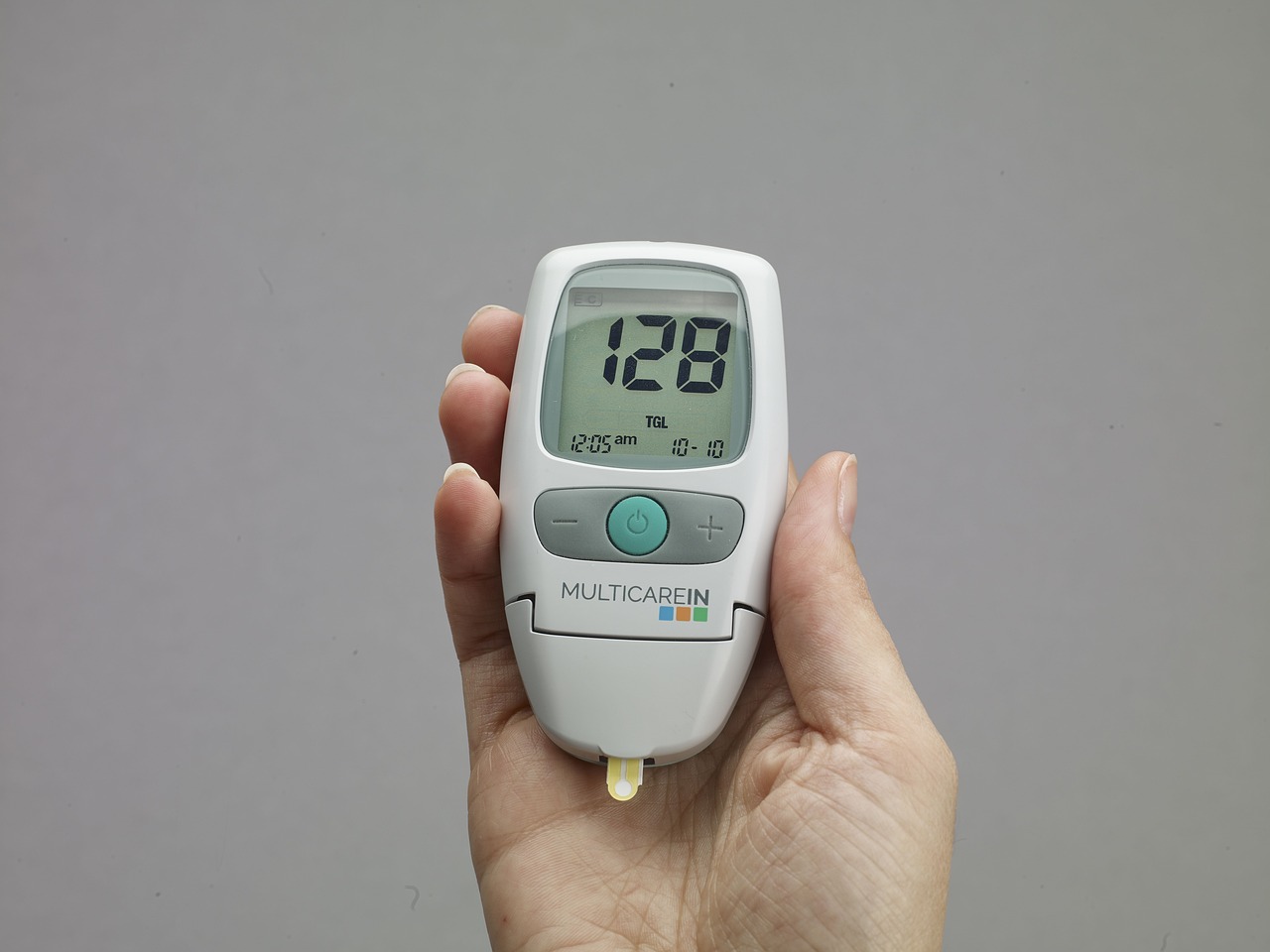Navigating dietary choices is crucial for individuals with diabetes, as they must consistently monitor the impact of foods on their blood glucose levels. Malt-O-Meal, a popular warm cereal made from wheat farina, often poses a question for those managing type 2 diabetes: is it a suitable food option for their condition? The cereal’s glycemic response—a measure of how much a food raises blood glucose—is a determining factor in answering this question.
The nutritional content of Malt-O-Meal, which includes its carbohydrate and fiber amounts, plays a significant role in how it affects blood sugar levels. Meals high in fiber are generally recommended for diabetes management, as fiber can help slow the absorption of sugar into the bloodstream. However, every individual’s body responds differently to different foods, and what might be a healthy option for one person with diabetes may not be for another.
In considering Malt-O-Meal as part of a diabetic diet, it is essential to look at both the food’s properties and the broader nutritional guidelines established for diabetes management. This includes analyzing the balance of nutrients in relation to other consumed foods and how Malt-O-Meal might fit into an individual’s meal planning. Consulting healthcare providers and utilizing nutritional recommendations can help diabetics make informed choices about including Malt-O-Meal in their diet.

I am a Nurse Practitioner licensed across multiple states, with experience in cardiology, nephrology, and family medicine. My current focus is on primary care, where I advocate for a holistic approach to healthcare, often recommending functional medicine to patients when suitable.
Understanding Diabetes and Nutrition
Managing diabetes involves maintaining blood glucose levels within a healthy range. The body’s ability to produce or respond to the hormone insulin is impaired in people with diabetes. Nutrition plays a critical role in controlling this chronic condition. An individual’s diet can influence blood glucose levels, overall health, and the management of diabetes-related complications.
A diabetes-friendly diet typically includes:
- Balanced meals with a variety of nutrients
- Controlled carbohydrate intake to help regulate blood sugar levels
- Increased fiber consumption, which can slow the absorption of sugar
- Healthy fats and lean proteins to support overall well-being
For those living with diabetes, it is essential to understand the impact of different foods on their blood glucose levels. Meals such as Malt-O-Meal can be included in a diabetes meal plan; however, portion sizes and preparation methods must be considered to keep carbohydrate intake in check.
Here is a quick reference for food components important in diabetes management:
| Nutrient | Benefits for Diabetes |
|---|---|
| Fiber | Slows glucose absorption |
| Carbohydrates | Primary impact on blood glucose |
| Protein | Helps in maintaining muscle mass |
| Fats | Should be consumed in moderation |
It is advisable for individuals to work with healthcare professionals to create a personalized nutrition plan, accounting for their specific needs and health goals. Consistent monitoring of blood glucose levels and adherence to dietary recommendations are key to effectively manage diabetes.
What Is Malt O Meal?
Malt O Meal refers to a brand of breakfast cereals that is often prepared with hot water or milk. It is recognized for its warm, smooth texture and is frequently marketed as a nutritious breakfast option.
Composition of Malt O Meal
Malt O Meal products are primarily made from wheat or corn. They generally include malt flavoring and are fortified with essential vitamins and minerals, making them a source of nutrients for the start of the day. The fundamental components typically encompass:
- Whole grain wheat or corn
- Malted barley flour
- Vitamin and mineral fortification, which may include iron and B vitamins
Malt O Meal Varieties
Malt O Meal comes in several varieties, each offering a different flavor or nutritional profile. Some of the most common Malt O Meal varieties include:
- Original: A simple, lightly sweetened flavor that serves as a warm and satisfying breakfast.
- Chocolate: Infused with cocoa for a richer, sweeter taste.
- Maple & Brown Sugar: Flavored with maple syrup and brown sugar for a distinctively warm and comforting taste.
These varieties are designed to cater to a range of taste preferences while providing a convenient and quick breakfast option.
Glycemic Index and its Importance for Diabetics
The Glycemic Index (GI) is a numerical scale that ranks carbohydrates based on their rate of glycemic response—in other words, the extent to which they raise blood sugar levels after consumption. For individuals managing diabetes, understanding and utilizing the GI is crucial because it helps in maintaining stable blood glucose levels.
Foods are classified by GI according to the following scale:
- Low GI: 55 or less
- Medium GI: 56-69
- High GI: 70 or more
Foods with a low GI are slowly digested and absorbed, causing a slower and smaller rise in blood sugar levels. On the other hand, high-GI foods cause a rapid increase. Diets rich in low-GI foods have been linked to improved glycemic control in people with type 2 diabetes, which is vital for reducing the risk of long-term complications.
For diabetics, eating low-GI foods can result in a number of benefits:
- Enhances blood sugar control
- Reduces insulin spikes
- May improve blood cholesterol levels
- Helps with weight management
It’s worth noting that while the GI provides valuable information, it is not the only factor to consider. The overall nutrient content, the amount of food consumed, and the combination of foods eaten together also influence blood glucose levels. Therefore, diabetics are encouraged to consider the glycemic load (GL), which takes the amount of carbohydrate in a serving into account, for a more comprehensive picture of a food’s impact on blood sugar.
In conclusion, using the GI as a guide can be a powerful strategy for individuals with diabetes to help make informed dietary choices and manage their condition effectively.
Nutritional Analysis of Malt O Meal
When evaluating Malt O Meal for individuals with diabetes, it’s essential to examine its macronutrient and micronutrient content, particularly focusing on carbohydrates, fiber, and added sugars, alongside its vitamin and mineral composition.
Carbohydrate Content
Malt O Meal is primarily composed of carbohydrates, which are crucial for those monitoring their blood sugar levels. A standard serving contains a significant amount of carbohydrates, making it important for individuals with diabetes to account for this in their meal planning.
Fiber Content
The fiber in Malt O Meal can vary depending on the specific product variant. Fiber plays a role in slowing the absorption of sugar into the bloodstream, making it a beneficial component for glycemic control. Products that are whole grain will typically contain more fiber.
Vitamins and Minerals
This cereal is often fortified with essential vitamins and minerals, including but not limited to iron and B vitamins, which support metabolic processes. It’s critical to examine the nutritional label for exact fortification levels.
Sugar and Additives
Some Malt O Meal products contain added sugars and additives which can impact blood glucose levels. Diabetics should opt for versions with no or minimal added sugars and be mindful of any artificial additives that may affect their dietary needs.
Malt O Meal in a Diabetic Diet
Malt O Meal can be included in the dietary management of type-2 diabetes mellitus when proper attention is given to portion sizes and overall meal balance.
Portion Control
For individuals with type-2 diabetes, strict monitoring of carbohydrate intake is crucial. Malt O Meal, a warm cereal, contains carbohydrates that can impact blood glucose levels. It’s important to measure servings adequately—typically, a single serving is 1/3 cup of dry cereal, which equates to roughly 24 grams of carbohydrates. Adhering to the recommended portion size can help manage calorie and carbohydrate consumption, which is essential for maintaining optimal blood sugar control.
Balancing with Other Foods
When incorporating Malt O Meal into a meal, it is important to pair it with foods that have a low glycemic index to minimize blood sugar spikes. For a balanced meal, they can include:
- Proteins: Adding protein sources like nuts or Greek yogurt can slow the absorption of carbohydrates and help stabilize blood sugar levels.
- Fiber: Fiber-rich foods, such as berries or a tablespoon of flaxseed, can also be a beneficial addition as fiber helps slow down the digestion of carbohydrates.
By carefully choosing accompanying foods, individuals can ensure that their overall meal supports their dietary goals for diabetes management.
Potential Benefits of Malt O Meal for Diabetics
Diabetics often require foods that help manage blood sugar levels while providing adequate nutrition. Malt-O-Meal, a brand of hot wheat cereal, may offer certain benefits aligned with the dietary requirements of those managing type-2 diabetes.
- Low in Sugar: With a focus on low sugar intake for diabetic diets, Malt-O-Meal can be a part of a healthy eating plan. The original variety contains no added sugar, which helps diabetics control their post-meal blood glucose levels.
- Whole Grain Benefits: Being a whole grain product, Malt-O-Meal is rich in fiber which is associated with better blood glucose control. Fiber slows down digestion, potentially leading to a more gradual rise in blood sugar after eating.
- Flexible Meal Option: Its versatility allows for the addition of various healthy toppings such as nuts, seeds, or fruits, enabling individuals to tailor their breakfast to their nutritional needs and personal preferences, all while maintaining appropriate blood sugar levels.
- Portion Control: The ability to measure exact serving sizes with Malt-O-Meal can assist diabetics in maintaining portion control, which is important for managing caloric intake and blood sugar levels.
It is critical for diabetics to consult with healthcare professionals before making changes to their diet. Individual nutritional needs can vary, and a dietitian can provide personalized advice on incorporating Malt-O-Meal into a diabetes meal plan.
Possible Risks and Considerations
When considering Malt-O-Meal as a dietary option for diabetics, one must assess its potential impact on blood sugar levels and be aware of the nutritional implications of processed grains in the context of diabetes management.
Blood Sugar Impact
Malt-O-Meal is a brand of breakfast cereals that typically contains carbohydrates which can increase blood sugar levels. For individuals with diabetes, it’s crucial to understand how the glycemic index (GI) of foods can affect their glucose control. Certain varieties of Malt-O-Meal cereals contain added sugars or are made from refined grains, potentially leading to faster glucose spikes.
Processed Grains and Diabetes
The consumption of processed grains found in some Malt-O-Meal products can be a cause for concern for diabetics. These grains have usually had the bran and germ removed, which strips them of fiber, vitamins, and minerals. A reduction in fiber can lead to more rapid digestion and quicker absorption of sugars, which might complicate glycemic control. Diabetics are often advised to prioritize whole grains for their lower impact on blood sugar levels.
Recommendations for Diabetics Consuming Malt O Meal
When individuals with diabetes consider incorporating Malt O Meal into their diet, it’s important that they manage carbohydrate intake and monitor blood sugar levels to ensure their dietary choices align with their health needs. Malt O Meal can be part of a balanced diet if prepared and consumed thoughtfully.
- Carbohydrate Counting: As Malt O Meal is a grain-based cereal, it contains carbohydrates. Diabetics should count the carbohydrates in their serving of Malt O Meal as part of their daily carbohydrate budget.
- Portion Control: Individuals should measure their portions to align with their dietary guidelines. Diabetics are often recommended to consume about 45-60 grams of carbohydrates per meal, but personal meal plans may vary.
- Fiber Content: Choosing a high-fiber variant of Malt O Meal can help with blood sugar control. Fiber slows down digestion, reducing the risk of blood sugar spikes.
- Adding Protein: Protein helps to stabilize blood sugar levels. Diabetics may want to include a source of lean protein, such as a boiled egg or Greek yogurt, with their Malt O Meal breakfast.
- Limiting Sugar: It’s advisable to avoid adding sugar to Malt O Meal. Instead, one could sweeten the cereal with low-glycemic-index fruits like berries or add cinnamon for flavor without increasing carbohydrate load significantly.
- Regular Monitoring: After consuming Malt O Meal, diabetics should monitor their blood sugar to understand its impact on their glucose levels.
Table 1: Malt O Meal Preparation Tips for Diabetics
| Ingredient | Suggestion |
|---|---|
| Malt O Meal | Opt for high-fiber variants |
| Milk | Use low-fat or almond milk for lower carbs |
| Sweeteners | Utilize a sugar substitute if necessary |
| Toppings | Add nuts or seeds for added protein |
In summary, diabetics may enjoy Malt O Meal as part of their diet with due attention to portion size, carbohydrate content, and overall meal balance.
Alternative Breakfast Options for Diabetics
For individuals with diabetes, a high-protein breakfast can be a strategic option to manage blood glucose levels. Integrating foods like eggs, Greek yogurt, or cottage cheese can provide the necessary protein, facilitating better glucose control and potentially lowering blood glucose levels after consumption. This approach aligns with studies showing that a higher protein intake at breakfast can lead to lower glucose levels later in the morning.
Diabetics should also consider incorporating whole grains such as oats. Prepared as oatmeal, and possibly sweetened with a sprinkle of cinnamon or a handful of berries, whole grains offer fiber which can aid in glucose regulation and provide a sense of fullness.
Low-carbohydrate smoothies made with leafy greens, nuts, seeds, and a piece of fruit can serve as a nutritious meal replacement that doesn’t spike blood sugar. Meal replacements, when appropriately formulated, can have a positive effect on glucose control and weight management.
Table: Sample Diabetic-Friendly Breakfast Options
| Food Category | Examples |
|---|---|
| High Protein | Eggs, Greek yogurt, Cottage cheese |
| Whole Grains | Oats, Quinoa, Barley |
| Smoothies | Spinach, Almond milk, Flax seeds, Blueberry |
It is advisable for diabetics to include a balance of fiber, healthy fats, and lean protein in their breakfast to promote satiety and manage blood sugar levels effectively. Adopting these alternative breakfast options into a dietary plan can contribute to better overall diabetes management.
Conclusion
When considering Malt-O-Meal for individuals with diabetes, one should assess its nutritional content and how it aligns with dietary recommendations. Malt-O-Meal, like other whole grain cereals, can contribute to a balanced breakfast when portion sizes are managed correctly and it is paired with other low glycemic index foods.
Key Points:
- Glycemic Control: It is essential for people with diabetes to prioritize foods that help maintain blood sugar levels. Foods high in fiber and with a lower glycemic index are generally preferred.
- Serving Size: Moderation is crucial. A controlled portion can help prevent blood sugar spikes.
- Additions and Substitutions: Adding protein or healthy fats, like nuts or seeds, can improve the meal’s nutritional profile and reduce the overall glycemic response.
Nutritional Balance:
| Nutrient | Consideration for Diabetes |
|---|---|
| Carbohydrates | Choose complex carbs |
| Fiber | Aim for high-fiber options |
| Sugars | Limit added sugars |
| Overall Calories | Monitor for weight management |
In conclusion, while Malt-O-Meal can be included in a diabetic diet, it should be done thoughtfully, ensuring that the total meal is balanced and within the individual’s nutritional requirements for managing their condition. Dieticians and healthcare providers can offer tailored advice to integrate products like Malt-O-Meal into a healthful eating plan.
For more information on dietary strategies for those with diabetes, readers might refer to publications like “Five Evidence-Based Lifestyle Habits People With Diabetes Can Use” and “Nutritional Recommendations for Individuals with Diabetes”. These resources provide a wealth of knowledge on managing glycemic response through diet.

